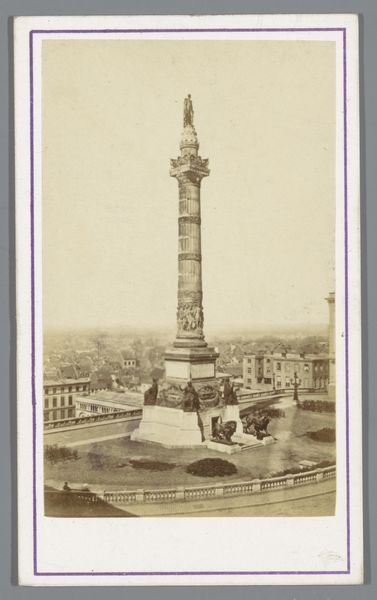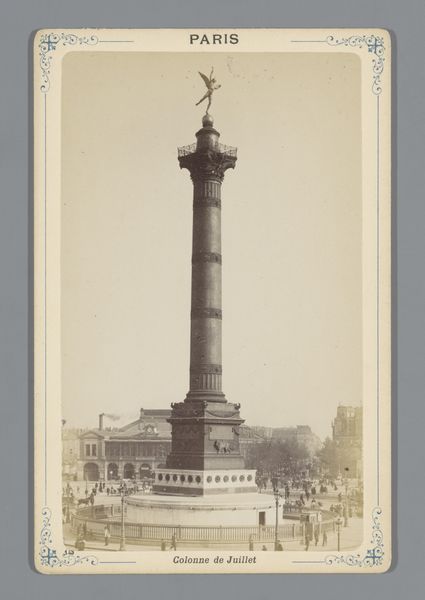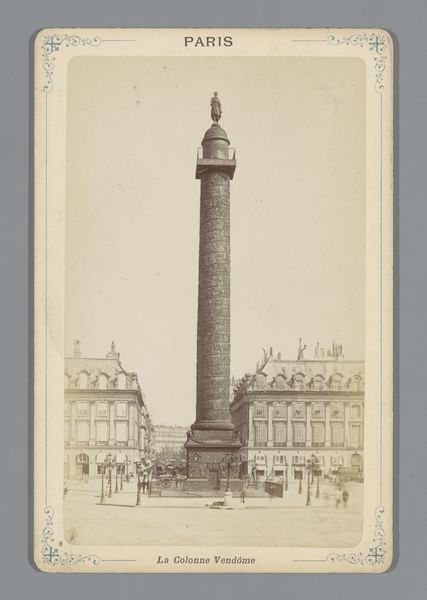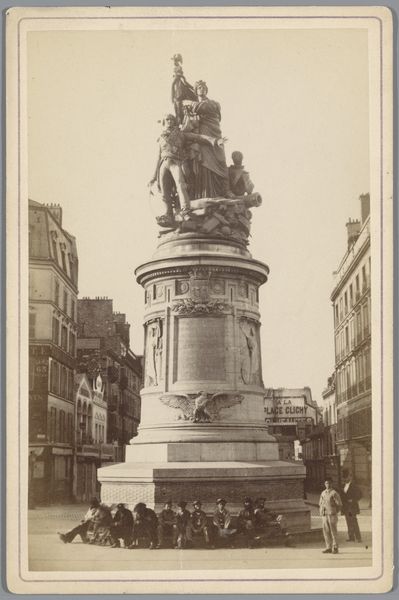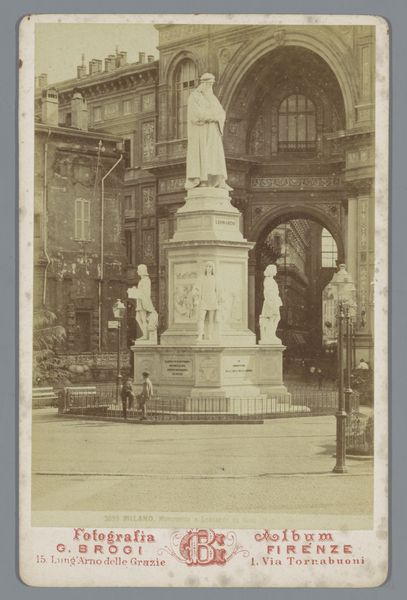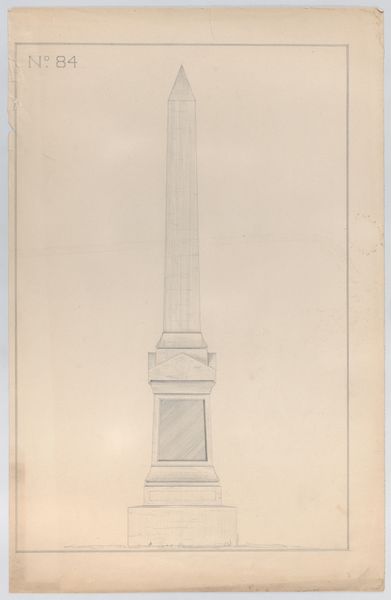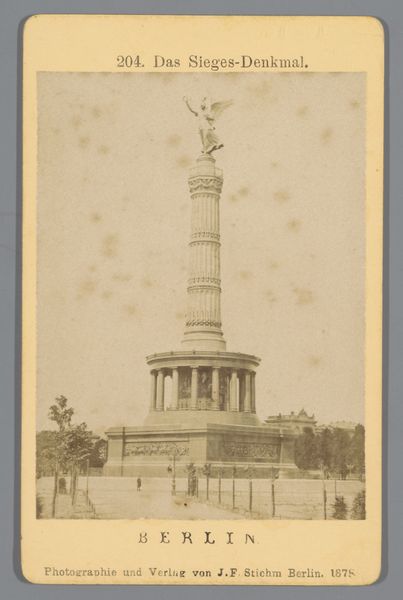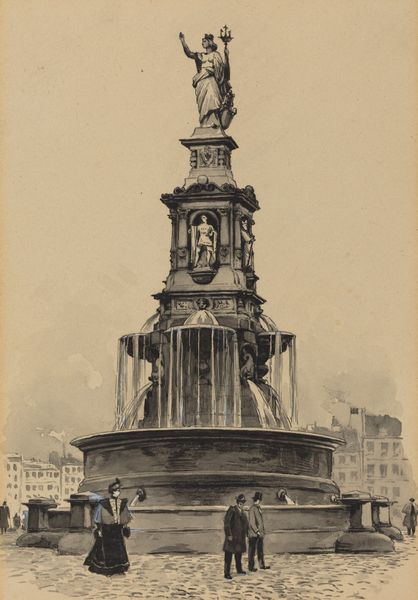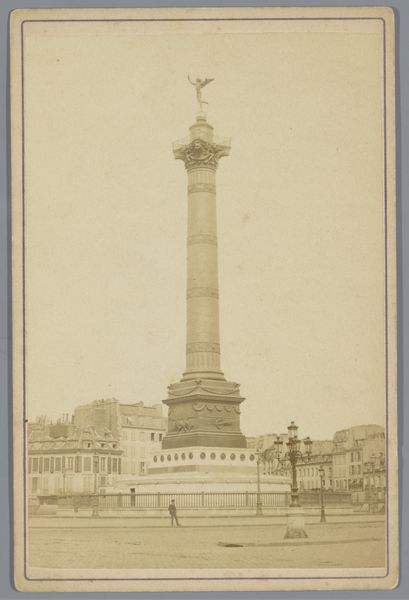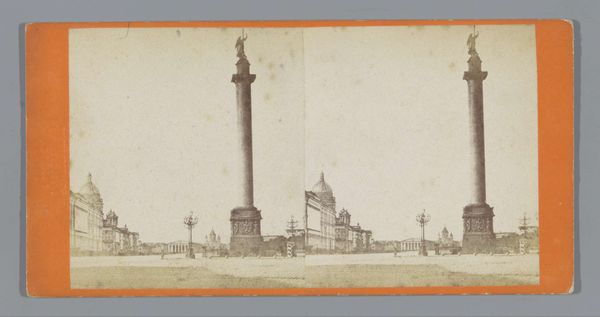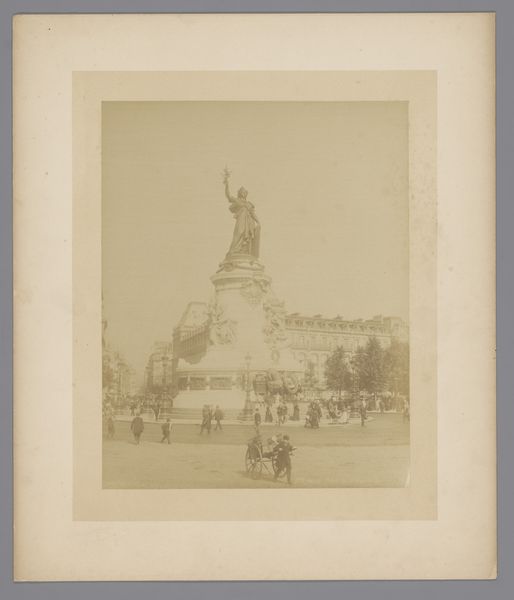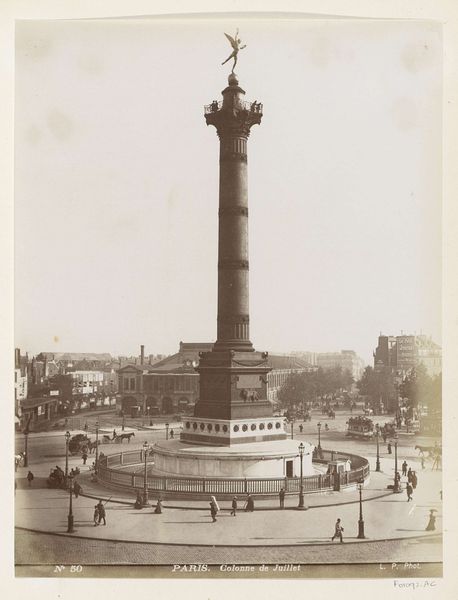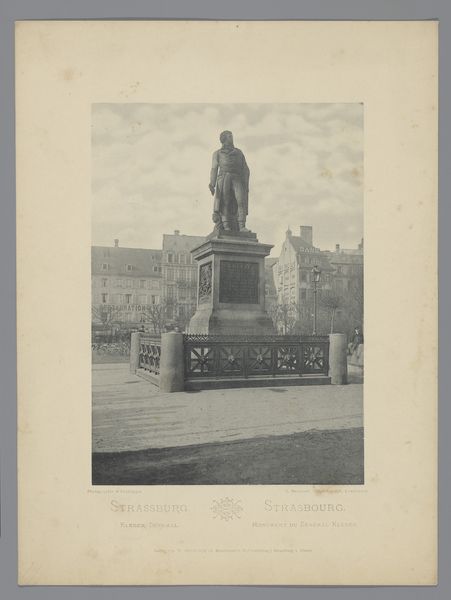
print, photography, albumen-print
#
neoclassicism
# print
#
landscape
#
photography
#
cityscape
#
albumen-print
Dimensions: height 102 mm, width 63 mm
Copyright: Rijks Museum: Open Domain
Editor: So, this albumen print, created sometime between 1865 and 1870, presents Nelson’s Column dominating Trafalgar Square in London. The image, almost monochromatic, evokes a very formal and monumental feeling. What do you see when you consider it? Curator: For me, it's crucial to understand the print as a manufactured object reflecting the social and economic forces at play. Albumen prints were a relatively new and very popular method of photographic reproduction during this era, creating a burgeoning industry. Who was consuming these images, and what kind of labor was involved in their production? Editor: That's a perspective I hadn't considered. I was thinking more about the artistic style. Do you think the neoclassical style evident in Nelson's Column is relevant? Curator: Absolutely. Neoclassicism itself embodies particular production methods and aesthetic ideals associated with power and empire. But, focusing on the materiality, consider the conditions of production. How many people were involved in making a single print like this? What were their working conditions? Understanding the photograph as a commodity changes our perception of what it represents. Editor: It makes me consider who had access to this kind of imagery at the time and how it was distributed. Was it intended for the wealthy, reinforcing their perception of the empire's grandeur? Curator: Exactly. The consumption of these images contributes to a cycle, further fueling the demand and standardizing the visual representation of places like Trafalgar Square and Nelson’s Column as symbols of British power. It’s a material object inextricably linked to ideological messaging. Editor: This has completely changed how I view not only this image, but all photographic prints. It’s not just about the scene captured, but the means through which it was captured and circulated, who it served, and the labour behind its creation. Curator: Precisely! Shifting the focus to these production chains offers critical insights that challenge traditional art historical narratives focused solely on artistic genius or aesthetic value.
Comments
No comments
Be the first to comment and join the conversation on the ultimate creative platform.
